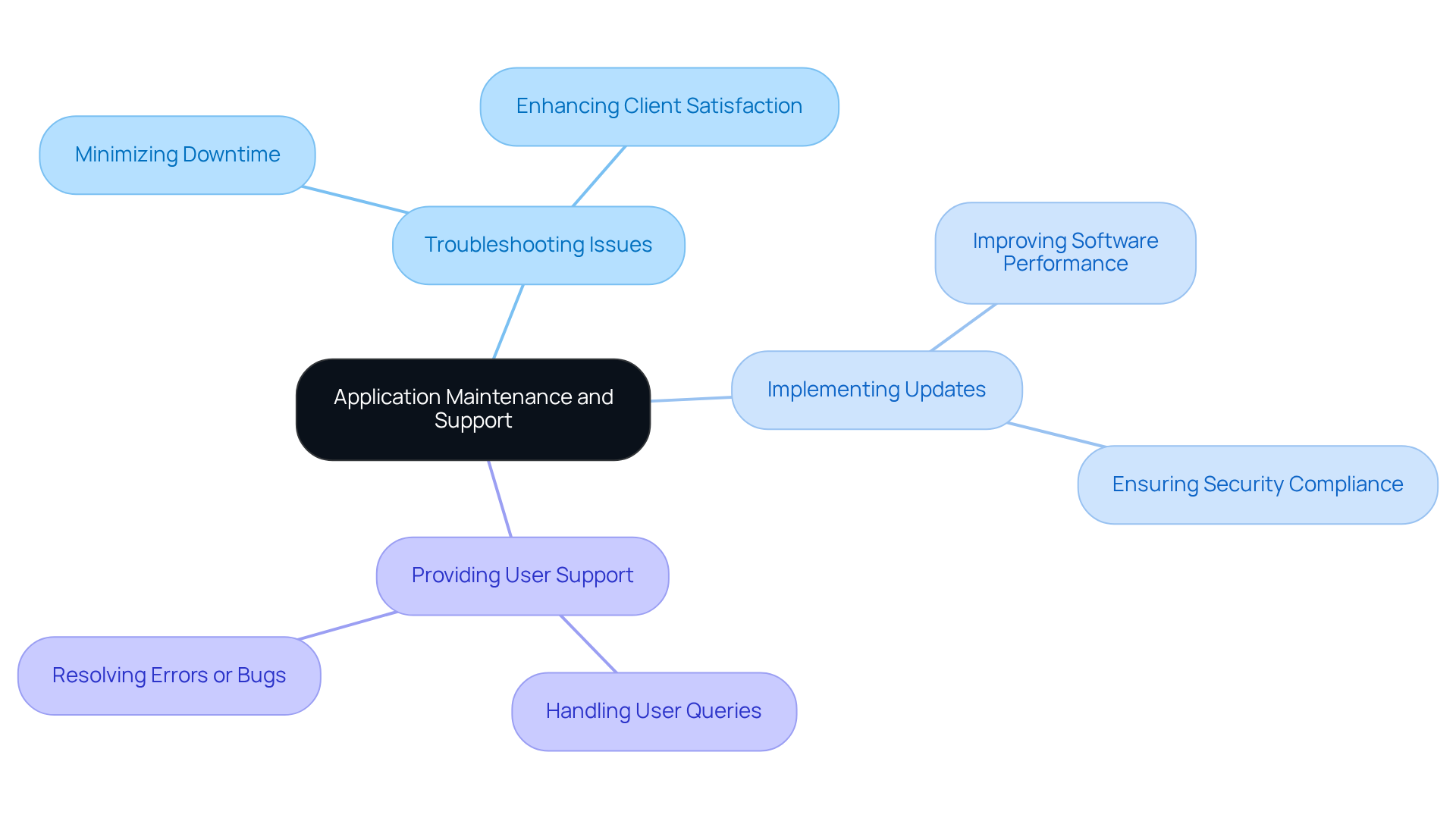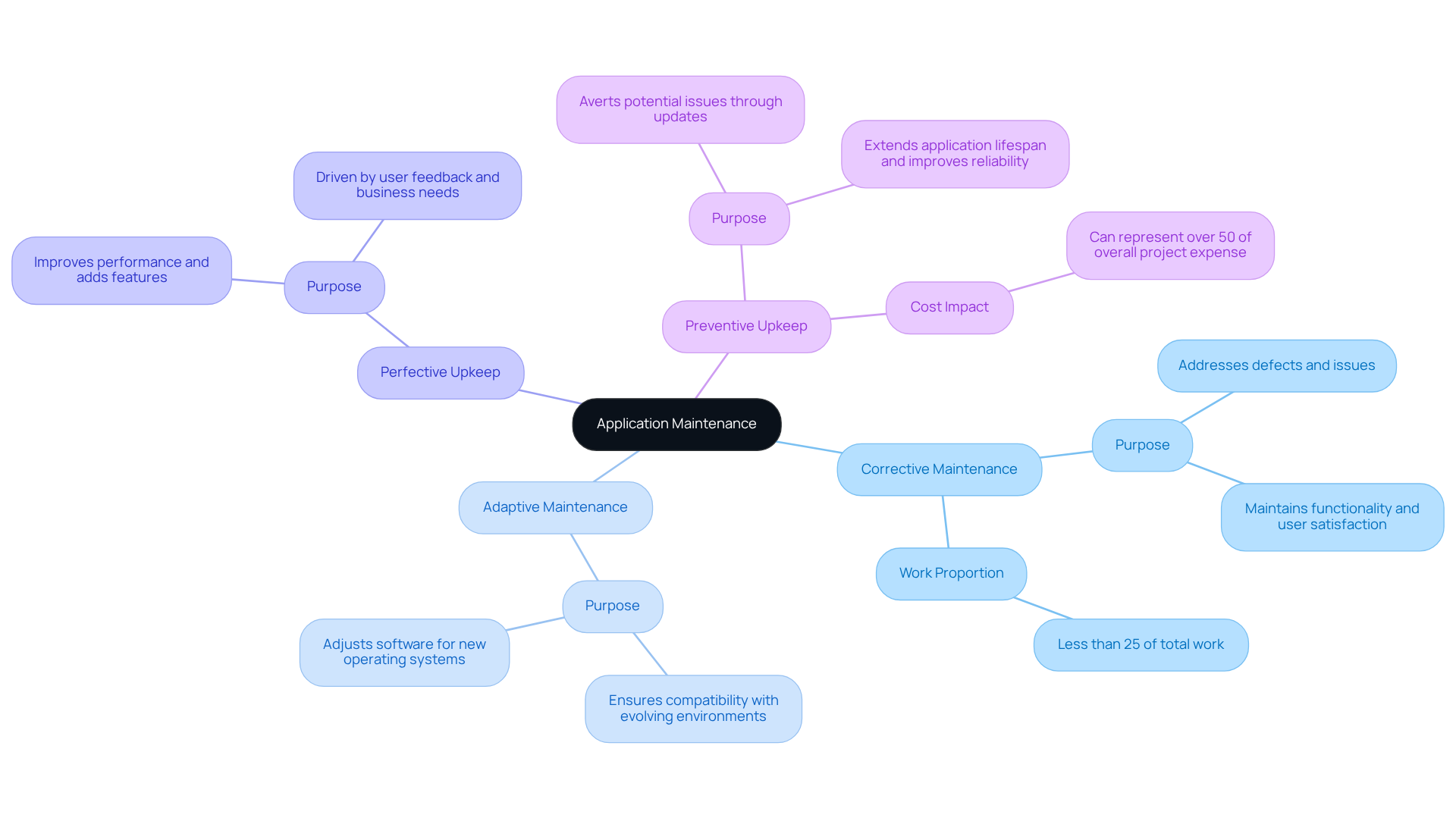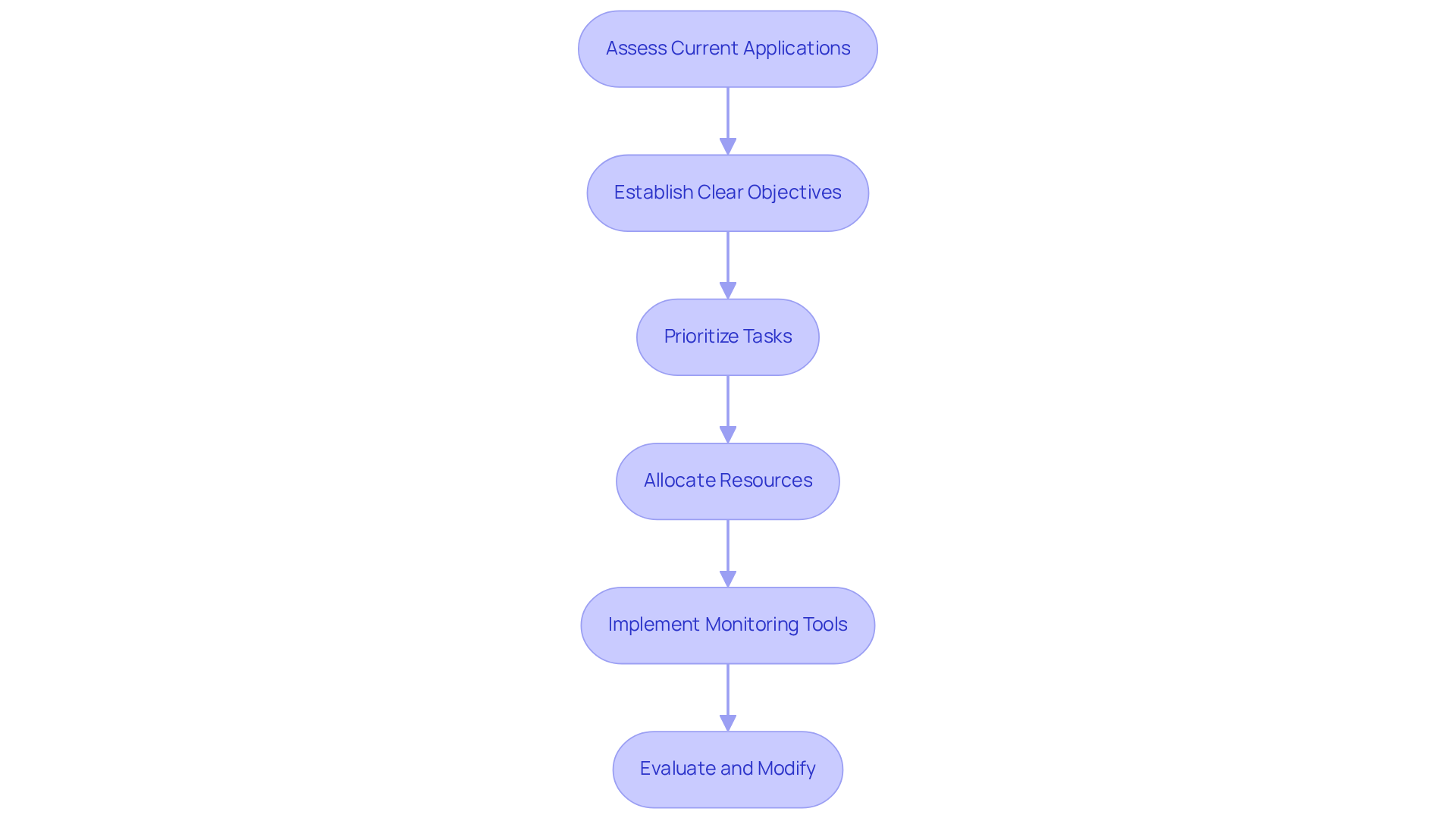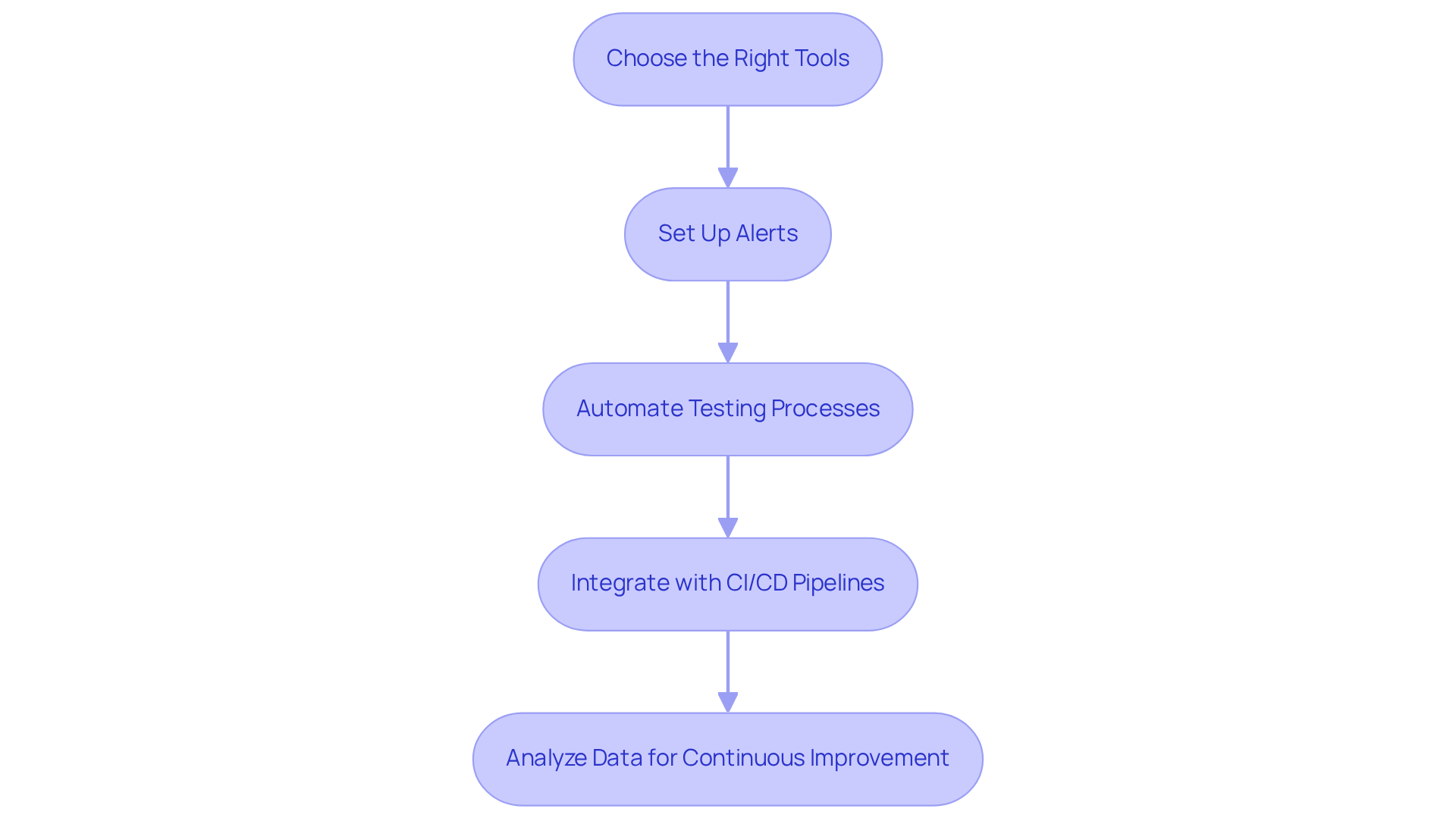AI
our blog
4 Key Practices for Effective Application Maintenance and Support

Overview
The article delineates four pivotal practices for effective application maintenance and support:
- Assessing current applications
- Establishing clear objectives
- Prioritizing tasks
- Implementing automated monitoring and testing
These practices are indispensable for ensuring that software remains operational and synchronized with business needs. They empower organizations to proactively address issues, elevate user satisfaction, and enhance overall operational efficiency. By adopting these strategies, businesses can not only mitigate risks but also position themselves for sustained success in a competitive landscape.
Introduction
Effective application maintenance and support are vital for ensuring that software remains functional and aligned with the ever-changing demands of businesses. Organizations stand to gain not only operational efficiency but also enhanced user satisfaction through a well-structured maintenance strategy.
Furthermore, with various types of maintenance—corrective, adaptive, perfective, and preventive—businesses must navigate the complexities of application upkeep.
How can they avoid costly pitfalls and ensure software longevity? This is the challenge that requires attention and strategic action.
Define Application Maintenance and Support
Support and upkeep, known as application maintenance and support, are critical ongoing procedures that ensure software programs remain operational, effective, and aligned with evolving business needs. This involves a range of activities, such as:
- Troubleshooting issues
- Implementing updates
- Providing user support
Efficient application maintenance and support is essential for minimizing downtime and enhancing client satisfaction, as it ensures that programs can adapt to technological advancements and shifting business requirements. This process includes both corrective actions to address current issues and proactive measures for application maintenance and support to prevent future problems, thereby ensuring that software consistently meets client expectations and business objectives.
Regular upkeep not only enhances software performance but also significantly impacts user satisfaction; research indicates that prompt issue resolution can foster greater user trust and loyalty. Furthermore, organizations that prioritize application maintenance and support often experience improved operational efficiency, making it an indispensable component of their overall technology strategy.

Explore Types of Application Maintenance
Application maintenance encompasses four primary types, each serving a distinct purpose in ensuring software longevity and effectiveness:
-
Corrective Maintenance: This reactive approach addresses defects and issues that arise during the application's lifecycle. It is essential for maintaining functionality and user satisfaction, as it responds to problems after they have been identified. Notably, corrective upkeep constitutes less than 25% of total work, emphasizing the need for a balanced approach.
-
Adaptive Maintenance: This type ensures that programs remain compatible with evolving environments, such as updates to operating systems or hardware. For instance, adjusting a software program to function with a new version of an operating system exemplifies adaptive support. By accommodating these changes, organizations can ensure continued usability and relevance in a dynamic technological landscape.
-
Perfective Upkeep: Concentrated on improving performance and incorporating new features, perfective upkeep is driven by feedback from users and evolving business needs. This form of maintenance is crucial for ensuring applications meet consumer expectations and market requirements. Specialists highlight that investing in perfective upkeep can significantly enhance user satisfaction and engagement.
-
Preventive Upkeep: A proactive strategy, preventive upkeep aims to avert potential issues through regular updates and optimizations. This approach not only extends the application's lifespan but also improves reliability, ultimately reducing the likelihood of costly corrective actions in the future. It's essential to acknowledge that software maintenance can represent more than 50% of the overall project expense, rendering preventive actions especially beneficial.
Understanding these support types is vital for organizations to create a comprehensive strategy that incorporates application maintenance and support to address both short-term and long-term software requirements. Moreover, common pitfalls in software maintenance include neglecting preventive strategies and failing to adapt to emerging technologies, which can lead to increased expenses and diminished user satisfaction. By recognizing these challenges, organizations can better navigate the complexities of software maintenance and ensure their programs remain effective and user-friendly.

Develop a Comprehensive Maintenance Strategy
To develop a comprehensive maintenance strategy, organizations must follow these critical steps:
-
Assess Current Applications: Conduct a thorough evaluation of existing applications to pinpoint areas needing upkeep and enhancement. Regular security risk assessments are essential, as they help identify vulnerabilities early and improve security controls, ultimately reducing the risk of cyber attacks.
-
Establish Clear Objectives: Precisely outline the aims of the upkeep plan, such as reducing downtime, enhancing satisfaction, or improving performance. As Joshua Selvidge, CTO at PurpleSec, emphasizes, a well-defined plan is crucial for effective implementation.
-
Prioritize Tasks: Based on the assessment findings, prioritize maintenance tasks according to their potential impact on business operations and user experience. This prioritization should consider the cost of potential security breaches, which can be significantly higher than the cost of conducting regular assessments.
-
Allocate Resources: Ensure that sufficient resources, including skilled personnel and suitable tools, are available for effective plan execution. The agency's use of AI and data science can enhance operational efficiency, making resource allocation more effective.
-
Implement Monitoring Tools: Leverage automated monitoring solutions to continuously track application performance and proactively identify issues. Utilizing tools for vulnerability assessments can help organizations stay ahead of potential threats.
-
Evaluate and Modify: Regularly revisit the upkeep plan, adjusting it based on user feedback and changing business needs. This iterative method ensures that the plan remains pertinent and effective, as illustrated in case studies where organizations successfully adjusted their methods to meet evolving requirements.
By adhering to these steps, organizations can significantly enhance their software upkeep efforts, ensuring that their digital solutions remain efficient and aligned with business goals.

Implement Automated Monitoring and Testing
Automated monitoring and testing are fundamental components of a successful software maintenance strategy. To effectively implement these practices, consider the following:
-
Choose the Right Tools: Opt for monitoring solutions that deliver real-time insights into software performance, interactions, and system health. Tools like AppDynamics and Dynatrace excel in monitoring key performance metrics, enabling proactive management of system health.
-
Set Up Alerts: Establish alerts for critical performance thresholds to ensure timely issue resolution. This proactive approach minimizes downtime and significantly enhances user satisfaction, as prompt responses to performance dips can avert larger issues.
-
Automate Testing Processes: Deploy automated testing frameworks to consistently evaluate software functionality and performance. This includes regression, load, and security testing, which are crucial for maintaining robustness against potential threats and ensuring that updates do not disrupt existing features.
-
Integrate with CI/CD Pipelines: Seamlessly incorporate automated monitoring and testing into Continuous Integration/Continuous Deployment (CI/CD) pipelines. This integration ensures that every code change undergoes rigorous testing and monitoring prior to deployment, helping to uphold high-quality standards and mitigate the risk of introducing new issues.
-
Analyze Data for Continuous Improvement: Regularly review monitoring data to identify trends and areas for enhancement. Utilizing this data informs future maintenance strategies, fostering ongoing improvements in system performance over time.
By implementing these practices, organizations can enhance their application maintenance and support to ensure applications remain efficient, secure, and user-friendly, ultimately supporting business growth and operational excellence.

Conclusion
Ensuring effective application maintenance and support is crucial for organizations aiming to keep their software systems operational and aligned with evolving business demands. By understanding the various types of maintenance—corrective, adaptive, perfective, and preventive—businesses can develop a robust strategy that addresses immediate issues while anticipating future needs. This proactive approach not only enhances software performance but also increases user satisfaction, ultimately contributing to long-term operational efficiency.
The article underscores essential practices for establishing a comprehensive maintenance strategy, including:
- Assessing current applications
- Setting clear objectives
- Prioritizing tasks
- Implementing automated monitoring and testing
Each step is significant in ensuring that applications remain effective, secure, and user-friendly. By leveraging the right tools and strategies, organizations can minimize downtime and foster a culture of continuous improvement, thereby enhancing overall user trust and loyalty.
In a rapidly changing technological landscape, the importance of application maintenance and support cannot be overstated. Organizations are encouraged to invest in these practices not only to maintain software functionality but also to drive innovation and adaptability. By prioritizing application maintenance, businesses can safeguard their digital assets, ensuring they remain competitive and capable of meeting the demands of their users and stakeholders.









